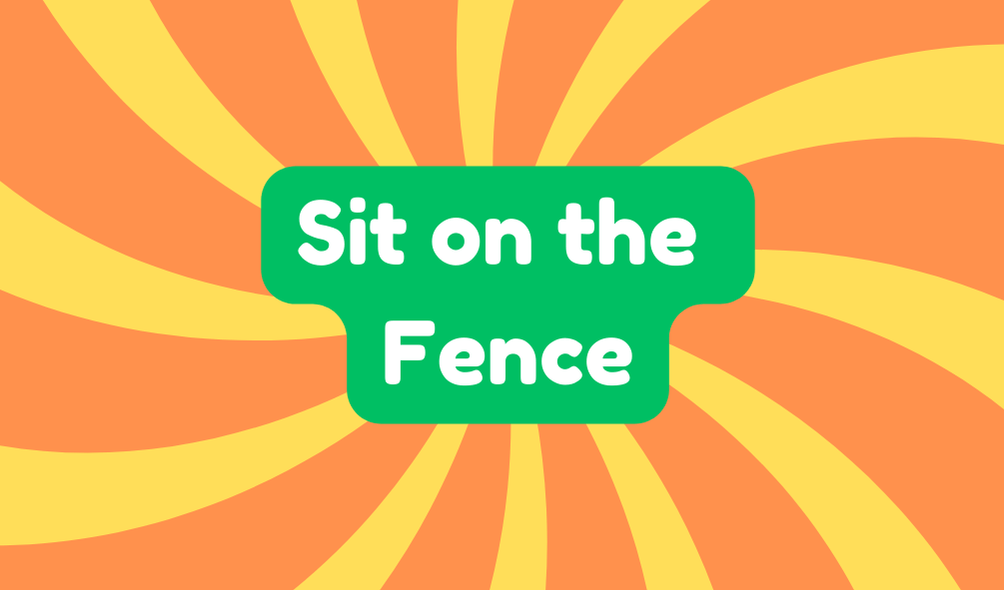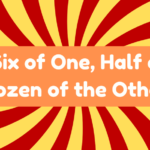"Sitting on the fence" describes a state of indecision or neutrality, where a person avoids taking a clear stance. This phrase originates from Middle English, gaining traction in the 1800s, reflecting societal views on commitment. Example usage includes: "He keeps sitting on the fence about his job offer." The concept remains relevant today, as many struggle with decisions in a fast-paced world, highlighting the importance of taking decisive action. Further exploration reveals deeper implications of this behavior.
Synonyms
While many might not realize it, the phrase "sit on the fence" has several synonyms that convey similar meanings of indecision and neutrality. These alternatives reflect the implications of a neutral stance, highlighting the impact of indecision on decision-making processes.
- On the sidelines
- Split down the middle
- Riding the fence
- Playing both sides
Example of Sentences
The concept of "sitting on the fence" often highlights a troubling aspect of decision-making: the tendency to avoid commitment. This behavior leads to indecisive choices and neutral opinions, often hindering progress. Consider the following examples to illustrate the implications:
- Can she choose between the two promotions, or is she merely sitting on the fence?
- How long will he remain on the fence about his future academic path?
- They must stop sitting on the fence and take a definitive stance on climate change.
- While debating, her neutral opinions show she's clearly sitting on the fence.
Origin
Indecision often haunts those who find themselves caught between choices, and the phrase "sitting on the fence" encapsulates this conflict effectively. Its historical usage can be traced back to Middle English, gaining popularity in the 1800s without a known origin or creator. The expression represents a reluctance to commit, revealing significant cultural implications about how society views decisiveness.
| Historical Usage | Cultural Implications | Contextual Relevance |
|---|---|---|
| Middle English roots | Reflects societal views on commitment | Common in discussions of political or personal choices |
| Popularized in 1800s | Highlights the stigma of indecision | Relevant in modern decision-making contexts |
| Unknown origin | Suggests universal struggle with choices | Used across various cultures and languages |
| Represents indecisiveness | Emphasizes pressure to take sides | Applicable in diverse everyday scenarios |
Collocations
Understanding "sitting on the fence" involves recognizing how certain phrases combine with this expression to convey specific meanings. These collocations reveal patterns of indecisive behavior and highlight the complexities of decision-making strategies. Importantly, they can emphasize the social dynamics surrounding neutrality. Key phrases include:
- Fencing opinions – showcasing reluctance to choose sides.
- Deciding factors – elements that push individuals toward a decision.
- Avoid commitment – reflecting a tendency to remain noncommittal.
- Neutral stance – an indication of refusing to take action in conflict.
These combinations underscore how indecision can manifest in various contexts, impacting choices profoundly.
How to Use in Everyday Language
When someone finds themselves in a situation where a decision is required, they might often choose to "sit on the fence" instead of taking a stand. This tendency can be particularly evident during everyday decisions, leading to frustrating indecisive moments. Understanding how to communicate this phrase effectively can enhance discussions about commitment and hesitation.
| Situation | Phrase Used |
|---|---|
| Job offers | "Still sitting on the fence?" |
| Political debates | "Why are you sitting on the fence?" |
| Personal relationships | "Stop sitting on the fence!" |
| Investment decisions | "Sitting on the fence won't help." |
| New opportunities | "No more fence-sitting!" |
Using this idiom can clarify the challenges of indecision.
Why Is It Still Relevant Today?
In today's fast-paced world filled with choices and competing opinions, the tendency to "sit on the fence" remains strikingly relevant. This phenomenon reflects widespread indecisive behavior, leaving individuals paralyzed and hesitant. Modern decision-making techniques, such as cost-benefit analysis or prioritization matrices, can empower people to move beyond indecision. However, many still struggle with commitment, opting for neutrality rather than confronting conflicting views. This reluctance not only stifles personal growth but also impacts collaborative environments. As society faces complex challenges, the ability to decisively choose sides is essential; embracing this need can lead to more innovative and effective solutions in various contexts.







